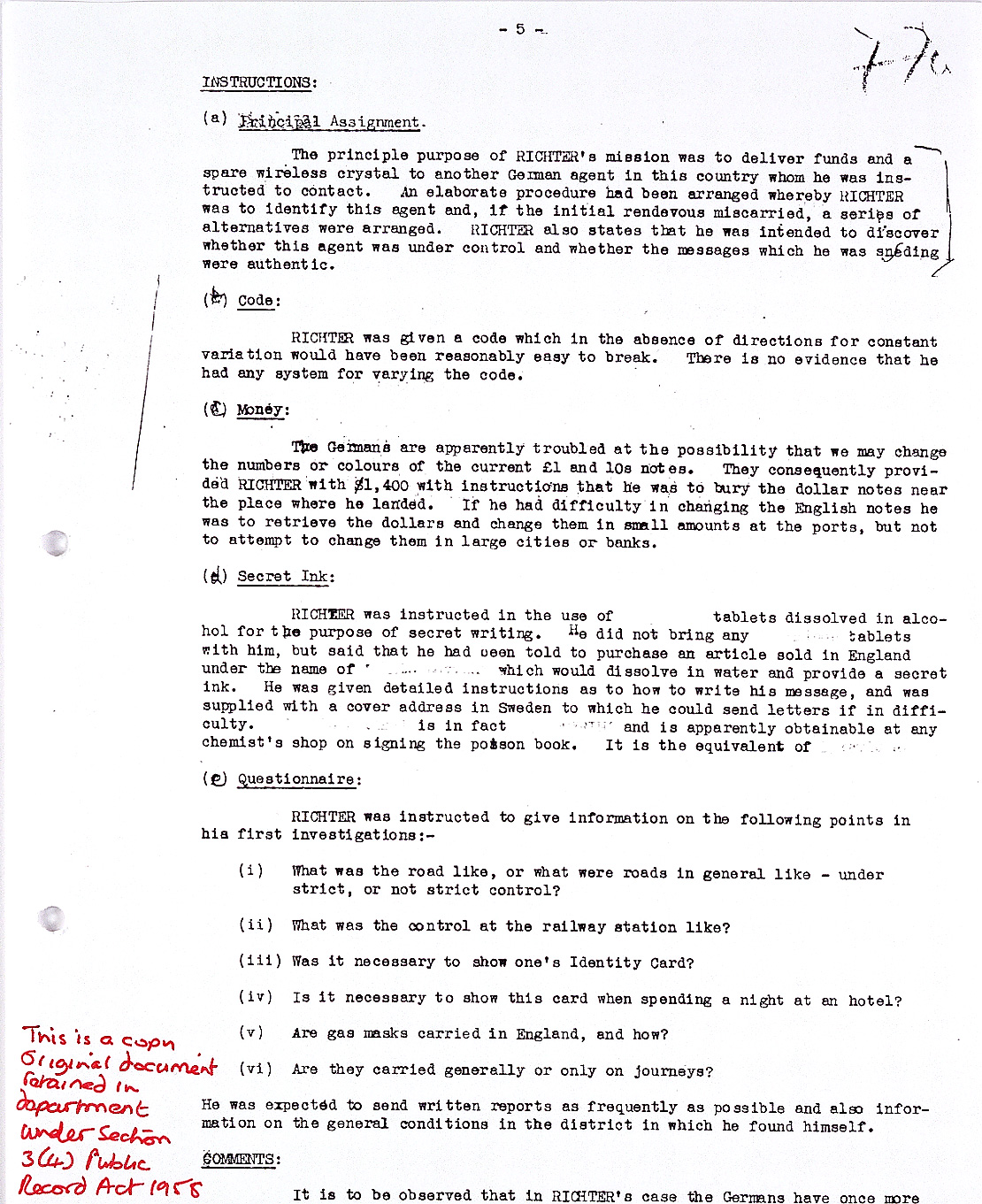
Extract from a report giving details of Karel Richter’s mission 1941-1942, Catalogue ref: KV 2/32
Richter’s first mission was to pass some equipment to another spy in England, check if this spy was really a double agent and then gather information on roads and railways, use of gas masks and National Identity Cards. After hiding for two days without food, Richter felt very ill and decided to find help. He wandered on to a busy road where two lorry drivers spotted him. The lorry drivers later reported him to a policeman who took him to the station for questioning. Richter was found to be carrying forged documents and other suspicious items so the police handed him over to the Security Service. After many hours of questioning, when confronted by another German spy [Jakobs], Richter admitted that he was a German spy and gave the Security Service full details of his mission.
- What was Karel Richter sent to Britain to do?
- Why do you think Richter was asked to collect information on roads, railways, gas masks and identity cards?
- Why would Nazi Germany want this kind of information?
- Why was Richter told to change the money he was given at ports rather than in large cities or banks?
- Part of this document has been kept secret. Can you think of a reason why it has been kept secret?
- How much damage would Richter have done if he had achieved his mission?
- Read the MI5 account of the capture of Karel Richter, Catalogue ref: KV 2/32. What makes the policeman suspicious of Richter?
Transcript
INSTRUCTIONS:
(a) Principle Assignment.
The principle purpose of RICHTER’s mission was to deliver funds and a spare wireless crystal to another German agent in this country whom he was instructed to contact. An elaborate procedure had been arranged whereby RICHTER was to identify this agent and, if the initial rendevous miscarried, a series of alternatives were arranged. RICHTER also states that he was intended to discover whether this agent was under control and whether the messages he was sending were authentic.
(b) Code:
RICHTER was given a code which in the absence of directions for constant variation would have been reasonably easy to break. There is no evidence that he had any system for varying the code.
(c) Money:
The Germans are apparently troubled at the possibility that we may change the numbers or colours of the current £1 and £10 notes. They consequently provided RICHTER with $1,400 with instructions that he was to bury the dollar notes near the place where he landed. If he had difficulty in changing the English notes he was to retrieve the dollars and change them in small amounts at the ports, but not to attempt to change them in large cities or banks.
(d) Secret Ink:
RICHTER was instructed in the use of _______tablets dissolved in alcohol for the purpose of secret writing. He did not bring any __________tablets with him, but said that he had been told to purchase an article sold in England under the name of __________which would dissolve in water and provide a secret ink. He was given detailed instructions has to how to write his messages, and was supplied with a cover address in Sweden to which he could send letters if in difficulty.__________ is in fact __________and is apparently obtainable at any chemist’s shop on signing the poison book. It is the equivalent of .
(e) Questionnaire:
RICHTER was instructed to give information on the following points in his first investigations:-
(i) What was the road like, or what were roads in general like – under strict, or not strict control?
(ii) What was the control at the railway station like?
(iii) Was it necessary to show one’s Identity Card?
(iv) Is it necessary to show this card when spending a night at an hotel?
(v) Are gas masks carried in England, and how?
(vi) Are they carried generally or only on journeys? He was expected to send written reports as frequently as possible and also information on the general conditions in the district in which he found himself.
